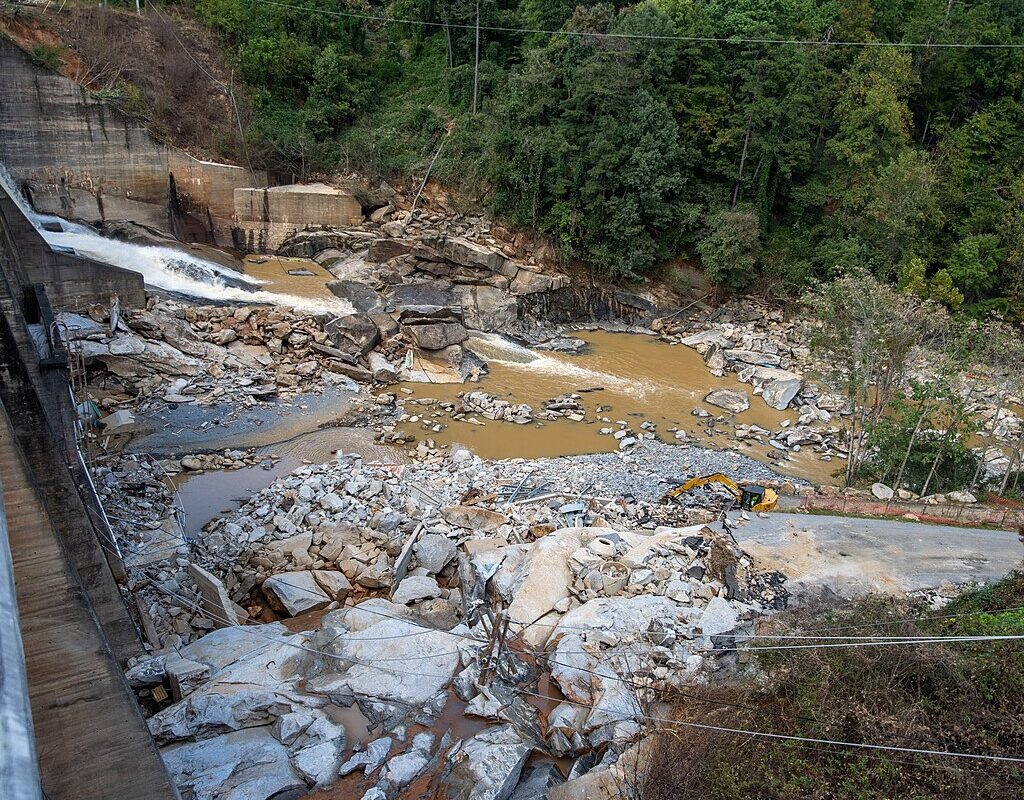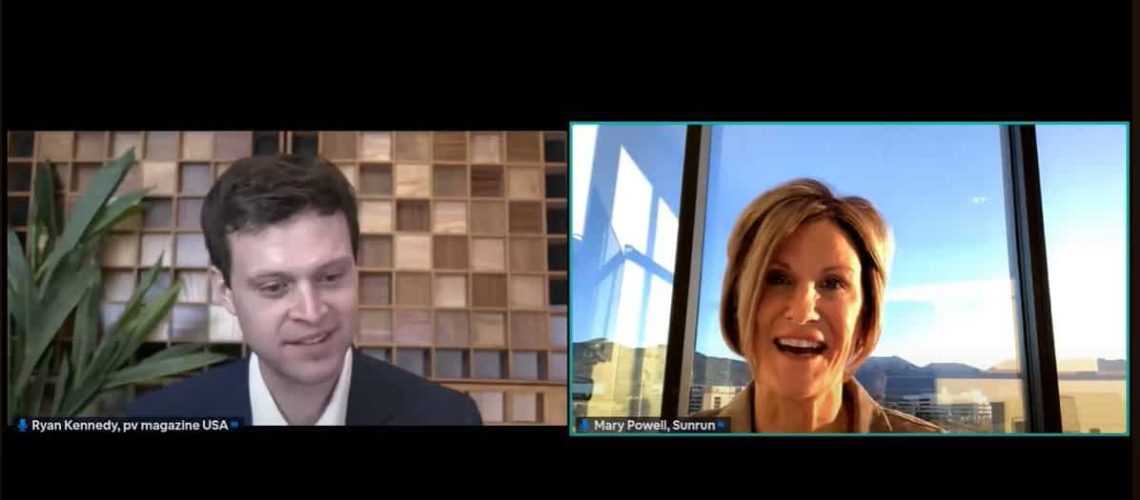Mary Powell, chief executive officer of major U.S. residential solar installer Sunrun delivered a keynote address on the promise of distributed energy during pv magazine USA week this October.
The electric power grid is built on an over 100-year-old business model that focuses on delivering power from a centralized source to many end-point users. While the electric grid brought the U.S. into the modern era, changing energy inputs are reshaping the way the grid is conceived.
Distributed energy generation like rooftop solar, and distributed storage offer a new way to conceive the grid. Rather than supporting a legacy system that is expensive to maintain, and in many cases supports monopolistic businesses, rooftop solar installers are meeting the challenge of delivering power right at the location it is needed.
Mary Powell, chief executive officer of residential solar and energy storage installer Sunrun, joined pv magazine USA for its annual live webinar event, pv magazine Week. The full interview can be viewed below.
From 2008 to 2019, Powell served as the president and chief executive officer of Green Mountain Power Corporation (GMP), an electric services company that serves 75% of the state of Vermont’s residential and business customers. The utility is a national leader in clean energy adoption, with its supply being 100% carbon free and more than 68% renewable.
With Powell as CEO, Sunrun recently crossed over 1 million customers, representing about one in five solar installations across the United States. Sunrun is installing close to 50% of all personal, at-home battery energy storage being activated today.
Powell shared how utility rates are continuing to escalate and climatic events are on the rise, leading to an ever-increasing occurrence of power outages. She said that consumers can achieve safety, stability and comfort at home by installing energy storage alongside solar. When the grid is down, customers solar-plus-storage systems activate, keeping the lights on during critical times.
“It became so obvious to me that grandpa’s grid is not built for the future of energy and not built to supply what consumers increasingly need,” said Powell. “There is not a grid solution, full-stop, there is not a grid solution to provide Americans what they need to have the sense of safety and security at their own home.”
Sunrun was an early market mover on home energy storage, installing its first home battery in 2015. Storage is now included in over 56% of its installations nationally, where it used to be 12% to 15%. California is now an 85% storage market and 100% in the investor-owned utility territories.
Powell noted that the grid is important, but she believes what is more important is to radically embrace distributed technologies that are in homes to give customers a better lifestyle while also supporting the grid. This “better lifestyle” includes power during outages, lowered emissions and more clarity on the price of utility bills for the next 20-plus years.
What’s more, Sunrun’s business supports the grid at large. The company enrolls eligible customers in programs called virtual power plants (VPP) under which electricity is dispatched from home storage to the grid in times of peak energy demand. This helps smooth out demand spikes, stabilizing the cost of electricity and shoring up supply. Sunrun customers are compensated for their voluntary participation in VPP programs.
VPPs also directly lead to lowered use of natural gas peaker plants, which are excess reserve plants that only fire during extreme seasonal peak electricity demand. Natural gas peakers are among the least cost-efficient and dirtiest power plants being built and operated today.
Yet the operators of “grandpa’s grid” allege that distributed solar and energy storage erodes electricity supply and creates grid maintenance costs that are pushed on to non-solar customers. In a subsequent article on pv magazine USA week sessions, we will break down the falsehoods of the utility-backed argument of the solar cost shift.
Despite the issues with the centralized transmission grid model, Powell recognizes that some form of utility-scale power will be needed.
“We all read the news about what’s happening with demand on the grid. Between AI demand and the electrification of society, we’ve always seen that it will be an ‘all-of-the-above’ [approach],” said Powell.
The keynote interview session can be viewed below from minute 4:20 to 35:00.
Popular content




